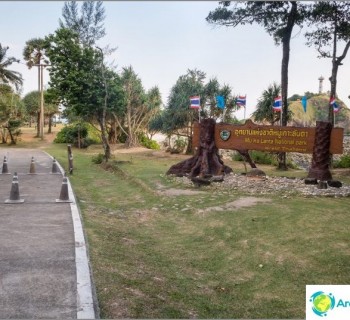Rainfall in Thailand causes many questions and bewilderments, especially among people who are planning to travel to this country for the first time. First of all, it is necessary to say what caused these specific climatic conditions. And they are caused by the fact that Thailand is located at the junction of tropical and subtropical zones. Therefore, it rains here, with varying intensity, all year round. During the period of cyclones, which are not uncommon here, especially in December - January, the rain can either drizzle or, as they say in Russia, «pouring out of the bucket». Therefore, when going on a vacation to Thailand, you do not need to indulge yourself in the hope that a relative drought will occur during your vacation period - and then the vacation will not bring unexpected unpleasant surprises..

The rainy season in Thailand
In general, the entire territory of Thailand can be roughly divided into 4 parts:
1. Northern part. It most of all corresponds to our ideas about the prevailing seasons. And in winter there is even zero temperature here. No, you probably won't see snow, but frost is not a rare occurrence..
2. Central part (Bangkok, Pattaya, Hua Hin);
3. Region of the Andaman Sea (Phuket, Krabi);
4. Coast of the Gulf of Thailand (Koh Samui, Phangan, Tao).
The climatic season in the central part of Thailand and its southern side can be divided into three components:
- hot season,
- very hot and
- rain season.
And if the hot season is more or less stable, then the rainy season is different everywhere. And, in particular, on the coasts, it can be at different times. If you get caught in the rain in January, you don't have to think that this is it - the rainy season (since the season is a relative concept, due to the fact that it rains here, I repeat, it rains all year round). The rainy season in January would be more correctly called the monsoon season. In the Andaman Sea, it begins in late May - early June and lasts until October, and on the coast of the Gulf of Thailand from November to January.
You can read more about temperature and other climatic features in the article Thailand Monthly Weather.
For example, let's take the island of Phuket - one of the most popular places for our tourists to visit. This island is washed by the waters of the Andaman Sea. The bulk of precipitation in the form of rain on the island falls in August-September. But the weather, as it were, is aware of the fact that people come here, practically from all over the world, and sends rain to the ground mainly in the evening and night hours, thereby washing away the dust, dirt and heat accumulated during the day. But even if the rain catches you in the daytime, flooding the street up to your knees, you can be sure that in an hour there will be no trace of it. At the same time, the monsoon season is famous for its waves due to the prevailing winds here, which cannot but be appreciated by surfers..


